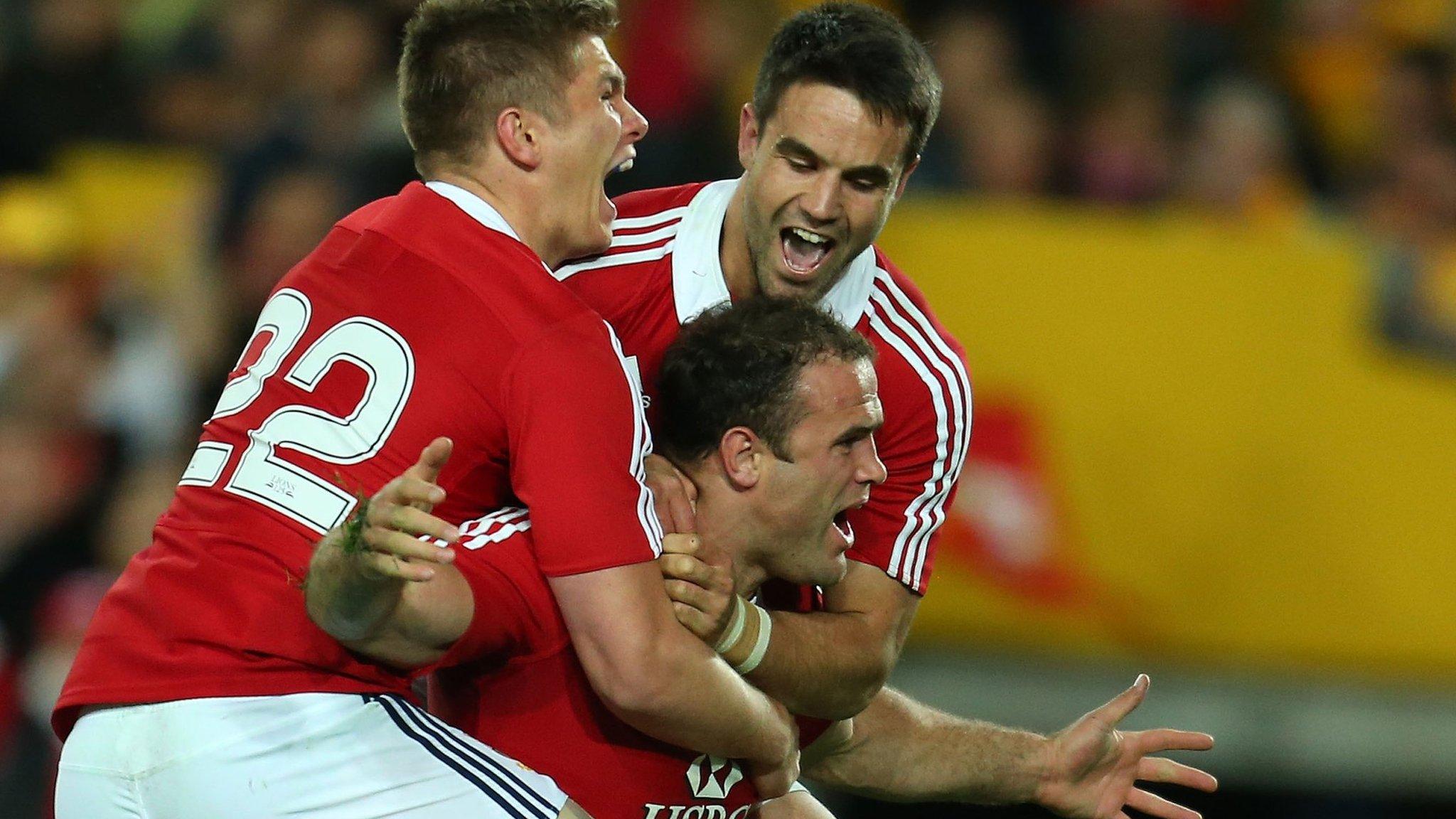British and Irish Lions 2017: Owen Farrell leads race for 10 jersey, says Guscott
- Published
- comments
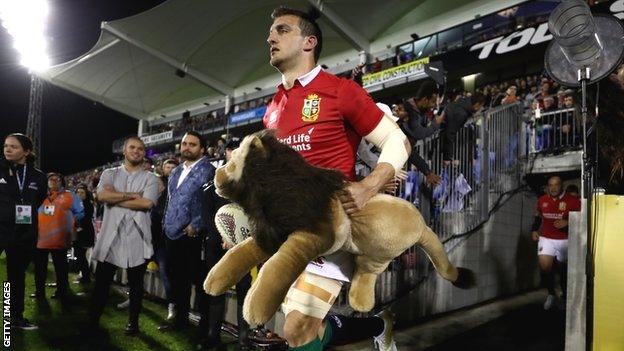
Sam Warburton is aiming to become the first man to captain the Lions to back-to-back series wins
In the opening match of the tour of Australia four years ago, the Lions won 59-8.
On their last visit to New Zealand back in 2005, the Lions scored two tries in the first six minutes of their first match on Kiwi soil., external
So I was surprised by the heavy weather the Lions made of their 13-7 win over the Provincial Barbarians in Saturday's tour opener.
It was a very scratchy performance. The players seemed like strangers, struggling to get to know each other and work out how they should combine.
Of course the Lions might have had limited preparation time, but the Provincial Barbarians side had only been together for a week or so.
That instinctive handling and offloading game might be part of the Kiwi DNA but the Lions are a team of seasoned internationals.
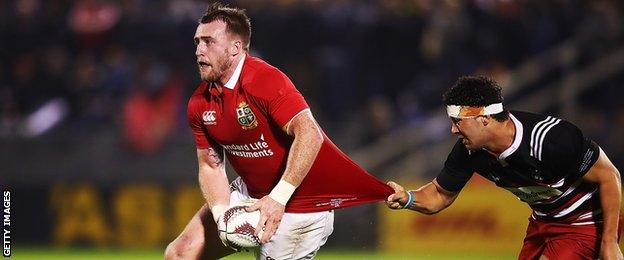
Hogg struggled to slip the attentions of the Provincial Barbarians defence
Individually there were some bright spots. Prop Kyle Sinckler, number eight Taulupe Faletau, flanker Ross Moriarty and centre Ben Te'o took their chance to impress.
Flanker Justin Tipuric and prop Mako Vunipola played with energy and intensity off the bench
But some players need to sharpen up their act.
At full-back, Stuart Hogg looked tense. His sparkling attacking play earned him the Six Nations player of the tournament award in each of the past two seasons.
But against the Provincial Barbarians he was forcing things, attempting a moment of magic as soon as he got hold of the ball.
Second row Iain Henderson and centre Jonathan Joseph just didn't get into the game enough.
On a Lions tour - particularly these ones with a short run-in to the Test series - you have to go looking for the ball. If you wait for the game to come to you, the whole trip can pass you by.
First game a tough test for the Lions - Gatland
Scrum-half Greig Laidlaw was decent. But he did what we know he can do and no more. He organised well, but rarely is he going to make a break. He was flagging at the end and was not whip-sharp with the pass.
Perversely, however, that underwhelming performance will be quite positive for the squad.
There are 18 players who weren't involved at all in the game on Saturday. The likes of Leigh Halfpenny, George North and Conor Murray will know that some of their rivals for a Test place have missed an opportunity and that they can stake their own claim against the Blues in midweek.
The battle for the 10 jersey
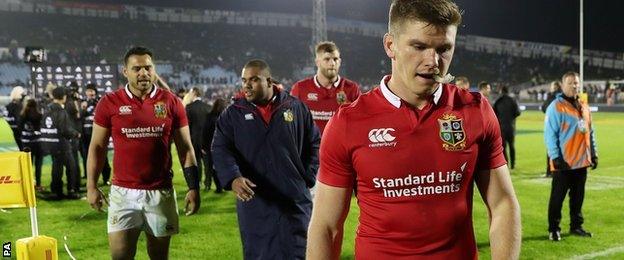
Farrell's sole Lions Test appearance came as a 63rd-minute replacement in the third match against Australia in 2013
Warren Gatland's decision over the team's fly-half might be the one that defines the tour.
The two main contenders were in competition and, even on the back of 20 minutes as a replacement, Owen Farrell is now the man in possession.
It is a very different prospect coming on after an hour or so when a lot of the hard work has already been done, especially against a side such as this which was high on enthusiasm but low on real top-class quality.
But Farrell made such a difference, just because Johnny Sexton was so average.
Like Hogg, Sexton seemed stifled by the expectation. At Leinster he is used to being the main man in team talks and on the field. He sets the mood music for that side and when you are not playing at your best that is a burden.
Farrell is part of a Saracens set-up that functions like a well-oiled machine.
He kept it simple, getting into organisational mode, zipping off a couple of good passes in the build-up to Watson's score and putting up a good tactical kick from which Rhys Webb almost scored.
There is still a long way to go, but Sexton is playing catch up after the opener.
The template to beat the All Blacks
The good news for the Lions is that you don't have to do anything wonderfully different to beat the All Blacks tactically.
But your standards have to be skyscraper high in everything you do - ruthlessly accurate, relentlessly intense and with the strictest self-discipline to keep the penalty count down.
That was what England did when they won at Twickenham in 2012 and Ireland did in Chicago in 2016.
England 38-21 New Zealand highlights
On both occasions they put the All Blacks under such pressure that the world champions eventually cracked and lost.
Some have been tempted to see if Sexton and Farrell could combine with one at fly-half and the other at inside centre.
To base a Test team around that would be a coaching decision from way out of leftfield by Gatland - particularly given the limited preparation time and the fact that a dual playmaker set-up is not one that he has ever really tried with Wales.
To rattle the All Blacks, you have got to have momentum. Both England and Ireland had powerful ball carrying inside centres - Manu Tuilagi and Robbie Henshaw respectively - in their famous wins over New Zealand.
That is not a template that you can fit both Sexton and Farrell into.
The answer lies within
Modern sides are so much more drilled than teams in the past, they have a thick playbook of pre-cooked moves and will have had endless talks through what they should do in certain scenarios.
That makes them stronger overall but it can mean that they end up looking to the sidelines for direction.
With a lot of the great touring sides, the players worked it out themselves. It was the case when the Lions won their only series in New Zealand back in 1971.
Coach Carwyn James told the players to express themselves and helped them come up with solutions themselves , externalrather than instructing them on what to do.
It was the same on the victorious Lions tours I was on with Sir Ian McGeechan as coach in 1989 and 1997.
The class for 2017 have to take responsibility to come up with the answers as well. Otherwise the team can stall.
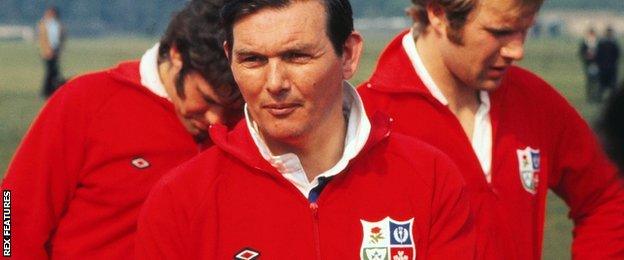
Carwyn James never coached internationally apart from with the Lions, spending most of his career with Llanelli
- Published3 June 2017
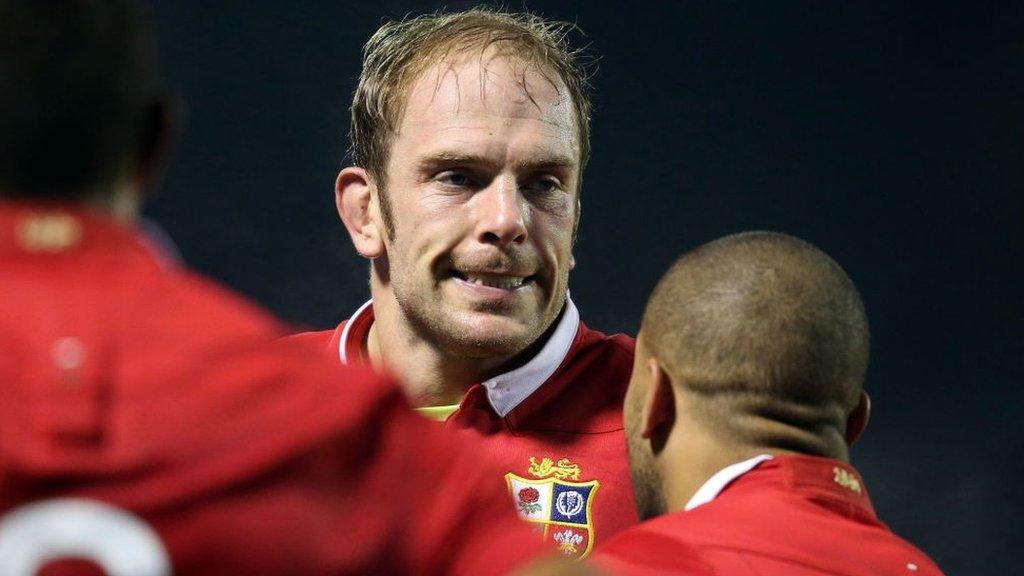
- Published29 May 2017

- Published3 June 2017
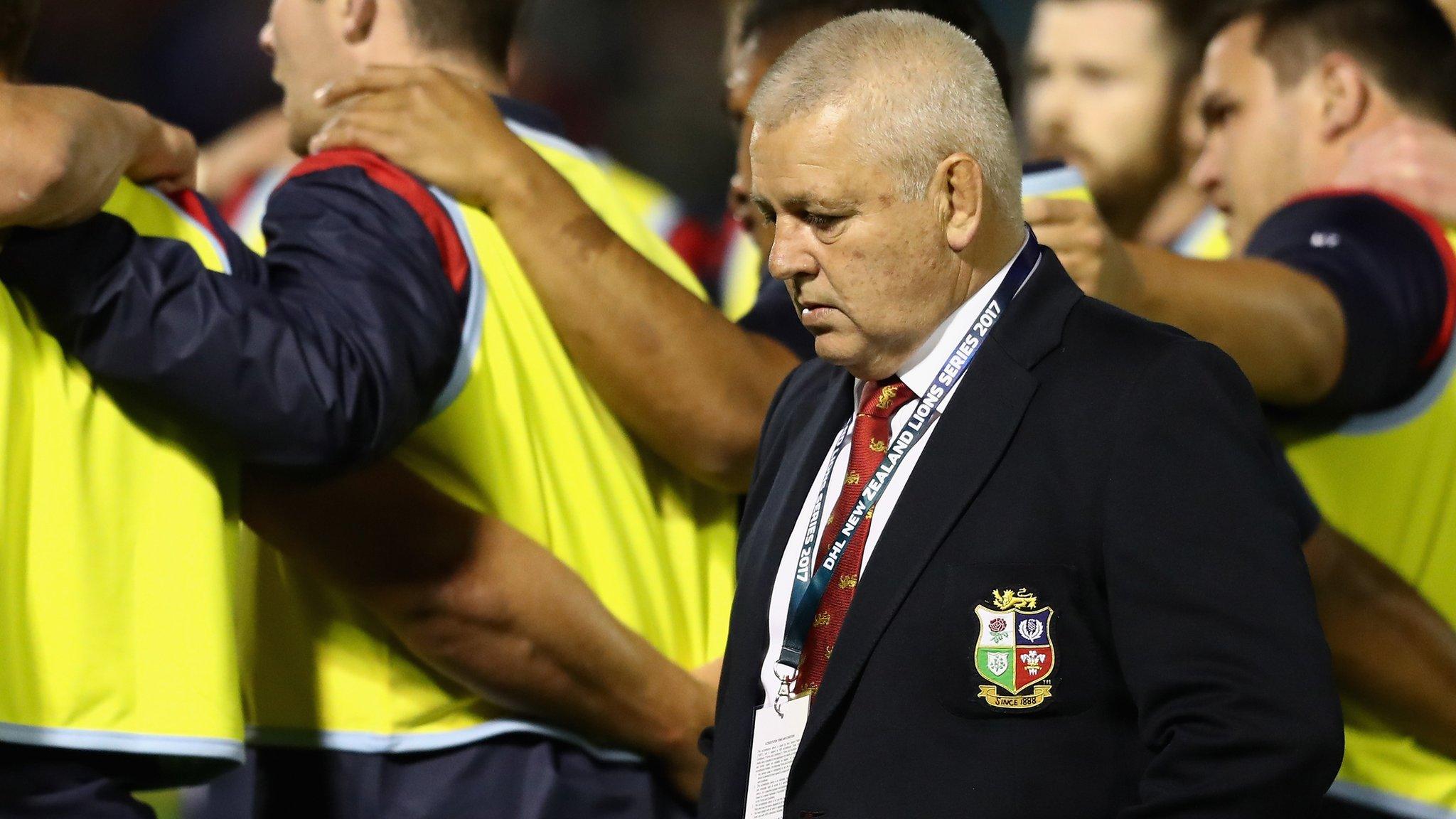
- Published2 June 2017
